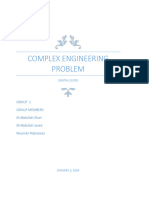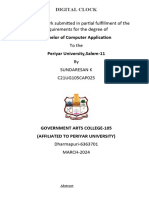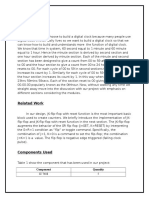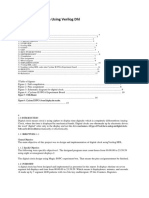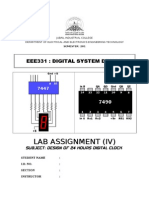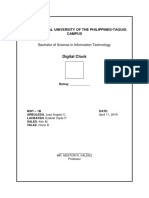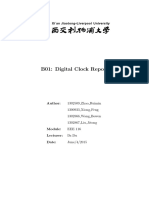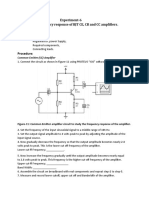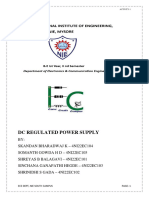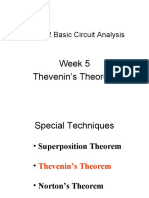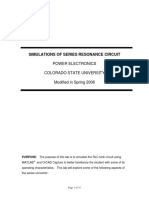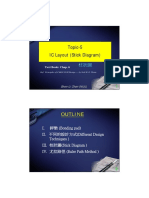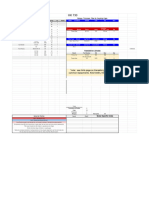0% found this document useful (0 votes)
119 views19 pagesDLD Group Project Counter
The document outlines a group project for designing a 6-digit digital clock using basic integrated circuits, including a 555 timer, CD4026 counters, and AND gates. The clock counts seconds, minutes, and hours, displaying the time in HH:MM:SS format while ensuring accurate transitions and resets at appropriate boundaries. The project serves both practical and educational purposes, reinforcing core concepts in digital logic design and providing hands-on experience with circuit implementation.
Uploaded by
hawiguteta96Copyright
© © All Rights Reserved
We take content rights seriously. If you suspect this is your content, claim it here.
Available Formats
Download as DOCX, PDF, TXT or read online on Scribd
0% found this document useful (0 votes)
119 views19 pagesDLD Group Project Counter
The document outlines a group project for designing a 6-digit digital clock using basic integrated circuits, including a 555 timer, CD4026 counters, and AND gates. The clock counts seconds, minutes, and hours, displaying the time in HH:MM:SS format while ensuring accurate transitions and resets at appropriate boundaries. The project serves both practical and educational purposes, reinforcing core concepts in digital logic design and providing hands-on experience with circuit implementation.
Uploaded by
hawiguteta96Copyright
© © All Rights Reserved
We take content rights seriously. If you suspect this is your content, claim it here.
Available Formats
Download as DOCX, PDF, TXT or read online on Scribd
/ 19







